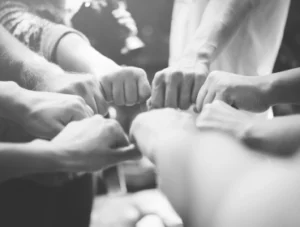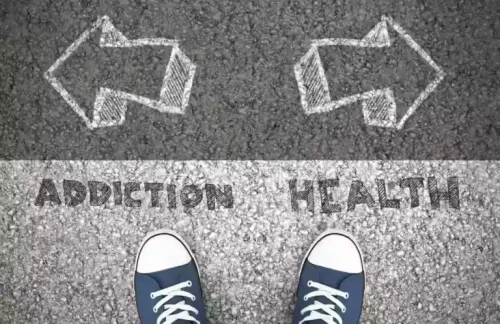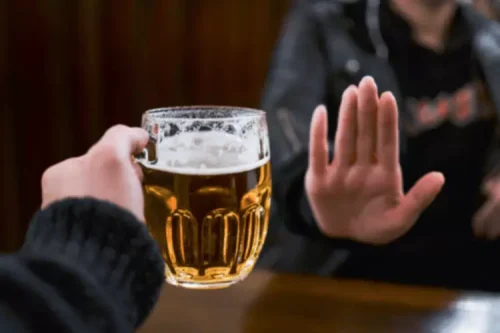
They may appear normal to those around them, other than the perception that they are drinking more. For more advanced forms of rhinophyma, the most effective way to manage thickened skin is almost exclusively through physically removing excess tissue. Sometimes, this can include relying on ablative lasers or electrical currents (a treatment known as diathermy) to help remove excess tissue. Severe abdominal pain and persistent diarrhea, as a result, is not fixable. Alcoholism was identified in 1956 as an illness by the American Medical Association (AMA).
Potential Predictors of Alcohol Use Disorders

Alcoholism is a complex and serious condition that manifests in various ways, including physical signs on the face. Recognizing these signs can be a crucial step in helping someone get the help they need. From redness and puffiness to more severe indicators like jaundice, the face Do Alcoholics Drink Every Day can reveal much about a person’s relationship with alcohol. However, it’s essential to look beyond the face and consider other signs and symptoms. Treatment and recovery are possible, and understanding these signs is the first step towards helping someone overcome their addiction.
How Does Alcohol Affect Your Eyes?
This person may take antidepressants to help them feel better or sedatives to sleep. They may look for drugs that give them energy and help them feel upbeat and happy. During this stage, the person starts to drink alone so no one will notice what is going on. They become more depressed as the need for alcohol consumes their life and anxious that some negative consequences are going to catch up to them.
Can your face recover from alcohol?
They are likely have a steady job, a seemingly stable family life, and do not often fit into the traditional stereotype of an alcoholic. It can have serious effects on the heart, kidneys, lungs, and pancreas and can cause high blood pressure. BetterHelp can connect you to an addiction and mental health counselor. In the United States, 14.5 million people ages 12 and above had alcohol use disorder in 2019. However, certain food groups also have benefits when it comes to helping with the discomfort of withdrawal symptoms and detoxification. Your insurance plan may cover some or all of the cost of alcohol rehab.
What Is Holistic Addiction Treatment?
They can often hold conversations without stuttering or slurring. They may appear to maintain coordination and motor skills to some degree. A person with a higher tolerance may not look intoxicated, despite drinking a large amount of alcohol. Others who have had less to drink may look more intoxicated than a person with a high tolerance. Many factors affect alcohol tolerance, including a person’s biochemistry, race, ethnicity, body mass and how an individual consumes alcohol.
- Both alcohol and drug use will dehydrate the skin, however drug use more commonly leads to open sores [35].
- Harriet writes on stress & mental health, and is a member of the Burney Society.
- At this point, they are probably unable to stop drinking on their own.
- The same study found a correlation between drinking wine and the visibility of blood vessels in the cheeks.
- Not only could the effects of these drugs be dangerous when paired with alcohol, but it put him in a significantly worse position legally.

At the end of the day, the person with addiction has to be willing to accept help. There are factors that pop up again and again when determining who might have an issue with alcoholism. If you’re in the “at-risk” population, it doesn’t take much to become dependent on alcohol or other drugs. Over time, heavy drinking makes the organ fatty and lets thicker, fibrous tissue build up. That limits blood flow, so liver cells don’t get what they need to survive.

For women, it’s defined as three drinks a day or more than seven drinks a week (1). Moderate drinking is defined as 14 or fewer drinks per week for men, and seven or fewer drinks per week for women. Over time, heavy drinking can lead to more serious oral problems like gum disease, tooth decay, mouth sours, and oral cancer. Dehydration also affects your skin and nails, leaving them brittle and cracked, Volpicelli said.
While many are aware of the behavioral and psychological signs, the physical manifestations on the face are often overlooked. This article delves into the physical signs of alcoholism, focusing on the face, and provides https://ecosoberhouse.com/ insights into understanding and recognizing this serious condition. In some individuals, alcohol abuse may lead to the desire for high-fat meals due to the release of ghrelin, a stomach hormone that regulates appetite.
Read The Latest Recovery News and Stories
Heavy drinking means eight or more drinks a week for women and 15 or more for men. Reducing drinking from two drinks a day to once every three days gives the body time to process alcohol and will reduce symptoms such as bloodshot eyes and dehydrated skin [28]. Alcoholism is a term that is sometimes used to describe what is known as an alcohol use disorder (AUD). Genetic, psychological, social and environmental factors can impact how drinking alcohol affects your body and behavior. Theories suggest that for certain people drinking has a different and stronger impact that can lead to alcohol use disorder.

Lifestyle and other health choices further impact on variation in facial changes, due to the effects of dehydration [14]. If the liver is coping well with the quantity of alcohol that it has to process, there will be fewer signs in the face. Equally, the way in which alcohol is processed by the body depends on liver processing [33].
